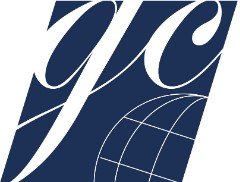In the wake of the “Freedom Convoy,” Canadian national security institutions need to educate the public about emerging threats
The so-called “Freedom Convoy” movement took Canadians by surprise, but it is simply the latest in a series of protests that have seen greater integration between the anti-mandate movements and the far right. These previously disparate political communities have morphed into one nebulous group that will continue to pose a new and evolving challenge to Canada’s national security in the months and years to come. The convoy’s organizers have documented ties to far-right movements and have deftly framed the narrative around the latest pandemic restrictions as yet another out-of-touch, obtuse move by governments, deploying far-right ideas to harness the energy of a segment of Canadian society that feels it has been abandoned by the political class in Ottawa.
To adapt to this new reality, Canadian security institutions need to better prepare for new threats facing Canadians and do more to engender public trust in institutions. This task is made increasingly urgent in the context of the recent Canadian-inspired convoy occupation in New Zealand, which ended in violent clashes with police.
Though trucks have cleared from downtown streets and border crossings, certain Canadians across the country will remain galvanized by the energy and reach of the convoy and the communities it has created. And—as the New Zealand case demonstrates—this movement has the potential to inspire copycat protests at home and abroad that can escalate into real violence. During the three and a half weeks that the convoy occupied Ottawa, the far-right elements of the convoy expanded their reach into the broader anti-mandate movement. White supremacist groups like Canada First were present among the protestors in Ottawa, and social media groups set up to organize logistics around the convoy were replete with white supremacist and QAnon content. This intermingling means that more Canadians will be exposed and potentially radicalized to far-right causes after joining the convoy movement with ostensibly innocuous, albeit misguided, intentions. As Canadians seek to make sense of the loss inflicted by the pandemic, fringe movements can offer simple, personally empowering explanations for complex circumstances. Preparing for and combatting these narratives should be a major priority for governments moving forward.
One way that governments should prepare for these threats going forward is to better understand them. Canada’s intelligence agencies have started to recognize the threat posed by white supremacists and the far-right broadly, but with more Canadians becoming vulnerable to mis- and disinformation propagated by far-right groups and conspiracy theories, there is a need for governments to take a more active role in learning about and addressing this new challenge.
The 2020 report by the National Security and Intelligence Committee of Parliamentarians recognized the shifting nature of the threat from foreign-based terrorist groups such as Daesh and al-Qaeda to domestic, ideologically-based violent extremists, such as the far-right. This conclusion is echoed in the Canadian Security Intelligence Service’s (CSIS) 2020 public report which recognizes the speed at which threat narratives surrounding ideologically motivated extremists have spread. Despite this, institutions and the public were taken by surprise by the convoy. This is due in part to the fact that Canadians have long enjoyed the privilege of not thinking about national security threats. Only after the 9/11 attacks did Canada pass anti-terror legislation, and a 2021 survey found that only three in ten respondents were able to identify CSIS as the agency responsible for investigating threats to Canada.
To respond to this changing threat environment, the Canadian government needs to engage the public to both build awareness of the threats facing Canada and trust in the institutions to combat these threats. A starting point would be the release of an updated national security strategy. The last and only iteration of such a document in Canada was released in 2004. Since then, the threat landscape has evolved dramatically. Policymakers may also wish to consider adopting a measure like the United States’ Quadrennial Homeland Security Review which mandates a review of the domestic threats to the US every four years. Both options can develop public awareness of the threats facing Canada to build public resilience to them. To develop trust in Canada’s institutions, transparency of their work is vital and should build on the work of the National Security Transparency Advisory Group, which has released two reports that illustrate how organizations with mandates relating to national security can increase transparency with the public. Trust in government responses will be crucial in facing Canada’s new reality.
Canadians have long had the privilege of not thinking about challenges to national security. But the protests in Ottawa and across the nation have distinctly Canadian roots and have illustrated the need to keep these threats at the forefront.

